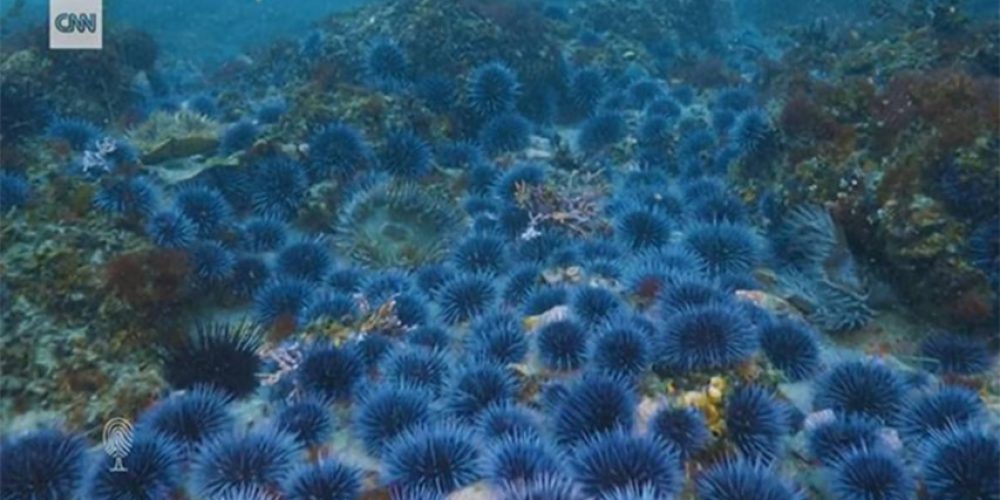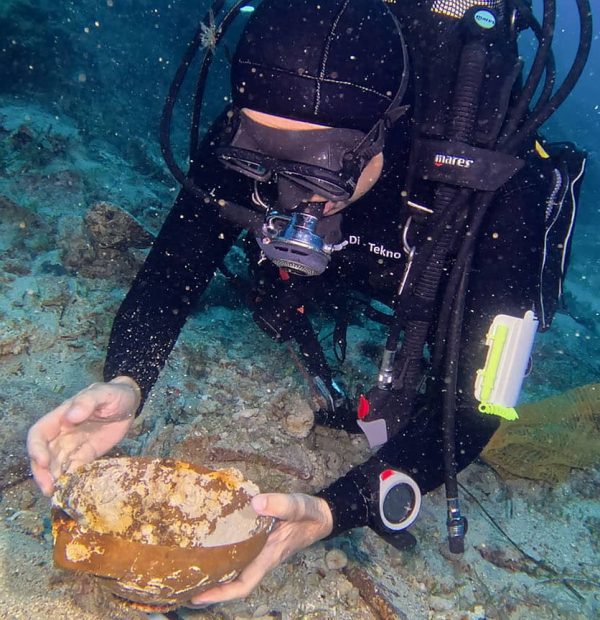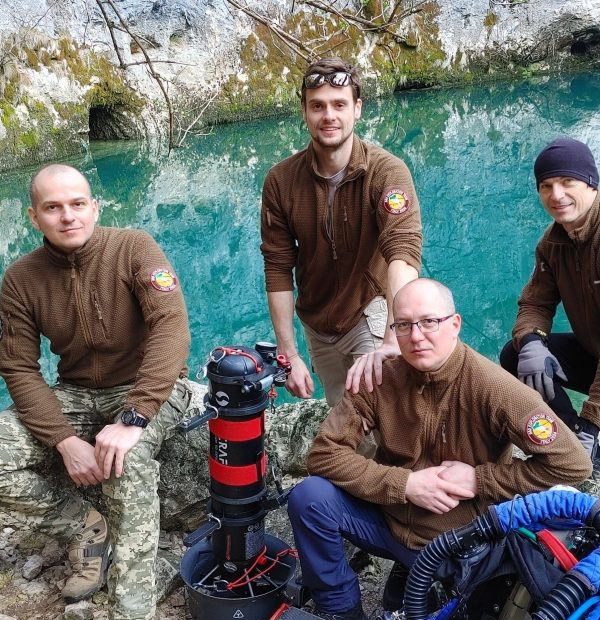Monday, 22 April 2024
Menu

Cotyledon algae, which form forests of seaweed, are the world’s largest sea plants. They thrive in cold, nutrient-rich waters; surfers encounter them among California’s famous big waves. They are among the fastest growing organisms on Earth – growing more than half a metre in length every day. Studies show that macroalgae, including cotyledons, store around 173 million tonnes of carbon worldwide each year. This is equivalent to the annual CO2 emissions from 160 coal-fired power stations. Most is deposited in the deep sea, permanently removing it from the atmosphere. This undoubtedly helps in the fight against climate change.
The drama unfolding along the northern California coast is what experts are calling a ‘climate-induced ocean disaster’. It is an example of how global warming is threatening the health of the oceans and the organisms that live in them. but also their ability to absorb carbon and help control climate change. The losses are so alarming that they have mobilised a coalition of scientists, NGOs and divers. A desperate race to preserve the last underwater seaweed forests and restore the balance of the ecosystem has begun. Before it is too late for that.
Letterfish are resistant to storms, large waves and hot water. However, the constant and rapid changes occurring in the climate prove too much to bear.
Due to regular and intense climate change, the water is warmer than it should be. In turn, the waves are bigger and often more destructive than they used to be. All of this is simply beginning to devastate these incredibly resilient forests of seaweed. – – Tom Ford, president of The Bay Foundation, said in an interview with CNN.
Warmer waters are also thought to have contributed to the spread of a disease that has ravaged the population of giant sunfish starfish that live among the leafhoppers. Without these voracious predators to control the sea urchins’ numbers, the urchins have multiplied rapidly and are contributing to the die-off of the leafminer forests.
Purple sea urchins have transformed thriving seaweed forest ecosystems into barren, worthless deserts. Tom Dempsey, director of The Nature Conservancy’s ocean conservation programme in California, describes how once the algae are eliminated, the sea urchins, deprived of their main food source, turn into ‘zombies’. He explains that by lowering their metabolic rate, these animals can survive in starvation for up to 50 more years, feeding only on algae growing on rocks on the sea floor. In this state, shrunk to almost nothing, starved sea urchins have no commercial value to divers and no nutritional value to other predators, who consequently ignore them.
Along the entire coast of California, people are experimenting with different methods of removing sea urchin deserts. “Call to Earth” highlights two of them.
The first is The Bay Foundation, an organisation that employs local divers to remove almost empty sea urchins. They smash them with hammers and leave their shells to biodegrade, returning nutrients to the seabed. In doing so, they have helped restore more than 230,000 square metres of marine forest in the region since 2013. Heather Burdick, director of marine operations at The Bay Foundation reveals that within months of starting the process, the giant leafminers began to grow back.
To be able to swim under this canopy of seaweed that didn’t exist in 2014… You could compare it to some kind of magical cathedral. – describes an astonished Burdick.
Secondly, sea urchin farmers are hoping to turn the purple ones into a food delicacy, similar to the red ones found in California. There are fewer and fewer of them there, so a group of divers and entrepreneurs are looking for ways to turn the worthless purple sea urchins into a saleable product. Santa Barbara divers Stephanie Mutz and Harry Liquornik have teamed up with Doug Bush, owner of a local aquaculture farm, to “farm” purple sea urchins by feeding and fattening them with sustainably harvested seaweed. Doug Bush says the cultured sea urchins are even better quality. On average, 19 out of 20 cultured sea urchins will be full of roe, which is served in high-end restaurants around the world.
In 12 weeks we go from an empty shell to a small vessel full of tender goodness. – Bush says.
CNN reporters also find out how scientists are working on the first ever breeding programme for the sunfish starfish. All to help speed up the recovery of this key marine predator. These downright extraterrestrial-looking creatures “inspire fear in the creatures they encounter,” says Jason Hodin, a scientist at Friday Harbor Laboratories, a research facility at the University of Washington. The ultimate goal of the programme is to release the starfish into the wild and help rebuild lost populations. It’s a proposed natural solution to the problem of controlling purple sea urchin numbers.
Despite the daunting scale of the devastation, those involved in the rescue operation remain hopeful. Thanks in part to the seaweed’s uncanny ability to regrow.
It is really difficult to look at all this objectively without feeling deeply sad, but we believe that we can save it. We have innovation, science, technology and market solutions at our fingertips. If we use them properly in tackling this great challenge, we can do it. Maybe we will see it in our lifetime. That would be a huge achievement. – – says Tom Dempsey in an interview with CNN.










Welcome to DIVERS24.COM, your daily source of scuba news, freediving, scuba diving information, and equipment reviews. Our comprehensive coverage of the dive industry from A to Z provides you with all the latest scuba news, training updates, underwater photography tips, and everything else related to scuba diving. Whether you’re a beginner or an experienced diver looking for more knowledge about scuba gear or techniques – we’ve got it covered! With our in-depth articles written by experienced divers who have been there and done that, you are sure to find exactly what you need here at Divers24.com. Dive into scuba news today!
Underwater Media Sp. z o.o.
Szafarnia 11/F8,
80-755 Gdansk, Poland
Welcome to DIVERS24.COM, your daily source of scuba news, freediving, and scuba diving information. Sign in for a weekly news update and discount coupons for dive gear and apparel.
@2023 - underwatermedia.pl. All Right Reserved. Designed and Developed by Tworzenie stron internetowych Gdansk

The Divers24 portal is currently the largest online medium treating diving in Poland. Since 2010 we have been providing interesting and important information from Poland and around the world on all forms of diving and related activities.
Contact us: info@divers24.com